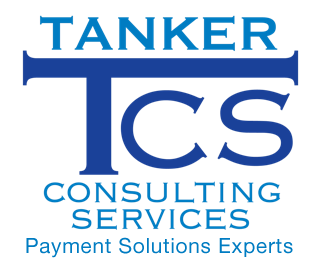David Heun
American Express’ OptBlue program has added 700,000 small merchants in the past 14 months, wooed by the promise of better fees for Amex acceptance. But it’s still too early to declare the program a success.
The next critical step is making sure Amex cardholders start using their cards at merchants that previously were reluctant to accept them, said Jeff Campbell, executive vice president and chief financial officer for American Express, during a July 22 second-quarter earnings presentation.
“It’s a multi-year effort to change perceptions.” Campbell said.
American Express introduced OptBlue in May of 2014 to enable its acquiring partners to negotiate pricing with small merchants that annually generate $1 million or less in Amex transactions. In the US, 14 major acquirers have signed on for the OptBlue program. And the New York-based card brand brought OptBlue to Canada three months ago through Global Payments.
The program has generally been viewed as part of the “new” American Express, one seeking to shed its image as a card for the elite.
When American Express announced in early 2015 that its 16-year co branding deal with Costco would end in March of 2016. Chairman and CEO Kenneth Chenault pointed to the card brand’s push for new technology and the OptBlue program for small merchants as critical to future revenue.
To get OptBlue up and running. American Express has to overcome a ”self-inflicted wound” in the perception that its card is out of the reach of many consumers and merchants. said Paul Martaus, merchant acquirer consultant and industry researcher at Martaus Associates.
I tried to explain Amex to merchants for a number of years and heard the same complaints over and over about cost.” Martaus said. But if you use math skills and compare and contrast what was paid for all merchant services. American Express. not having to pay interchange. was really not that far off.”
The historical take that American Express wants only the “upper crust customers” and larger retailers is no longer true. Martaus said, “The previous inertia is hard to break in the marketplace. but American Express is a good company that knows what it is doing.”
American Express reiterated on the earnings call that OptBlue. new card offerings, the Plenti loyalty program and American Express Checkout for e-commerce will help the company overcome the loss of the Costco relationships in Canada and the US.
For American Express, broad acceptance has always been an uphill battle because merchants have been concerned about price point,” said Gil Luria. analyst with Los Angeles-based Wedbush Securities.
But American Express has shown it can put the proper marketing dollars behind its programs and is likely to do so to bring consumers to OptBlue merchants. Luria said.
Because Amex cardholders typically try to use their Amex cards whenever possible at merchant locations. eventually they learn that more smaller stores have begun accepting the cards. Luria said. “It will become sort of a self-fulfilling cycle. but as it has been for the first part of American Express’ history. it will be a lot of work.” Luria added.
Part of that work will involve acquirers getting into the stores and making sure American Express stickers are visible in windows or near the point of sale terminals. Campbell said.
Nearly 80% of consumers making payments to doctors of hospitals would prefer to do so through a one-click method on their health-plan provider’s website, according to data from health care payments provider InstaMed.
A full 93% of consumers want to pay healthcare bills online, even if it is not a one-click process or if they have to go through a bank’s bill-pay site or a hospital’s site instead of their insurance provider.
“Those statistics caught our attention and we see it as a continuing trend,” said Chris Seib, chief technology officer and co-founder of InstaMed, “You can have a great surgeon and great care by a real nice doctor, but if it take you four months to sort through all of the bills, then 8 hours on the phone getting it straight, then that is very frustrating.”
To build its 2014 health care payments report. Instamed compiled data from surveys with more than 100,000 health care providers nationwide, 3,000 nationwide and regional payers (such as insurance companies), and 1,000 consumers who had health insurance.
Health plan providers focusing on the consumer experience will benefit by improving the payment process, Seib said. The U.S. health care payments market is expected to reach an estimated $5 trillion by 2022, according to Instamed’s report, citing Centers for Medicare and Medicaid Services forecasts.
In general, providers are handling more consumer payments because of high-deductible insurance plans and the increase coverage through the Affordable Care Act.
Payment technology can solve a key concern for consumers making health payments by making it more convenient, said Michael Trilli, senior healthcare analyst for Aite Group.
“The convenience is paying through channels, be it mobile or online, that they use,” Trilli said. “Fixing how the information is presented to members should be considered part of the bigger digital services approach and trying that simplified presentment to payment is where it all comes together.”
“There’s no magic here,” Campbell added. “It’s a matter of balancing some of those basic blocking and tackling things we need to do but we’re very focused on this.”
In addition to progress reports on OptBlue, Campbell told analysts that the company’s Plenti loyalty program has quickly attracted 20 million consumers. Annex began managing the cross-merchant loyalty program in March.
American Express has also retained more than “half of the out of store spend related to the former Canadian Costco co-brand product” though a newly launched cash back card offered to past Costco cardholders, Campbell said.
That strategy is “very specific to the Costco relationship in Canada” and has no relevance in the U.S., said Campbell, calling the U.S. situation a very complex transaction that he could not comment on at this time.
